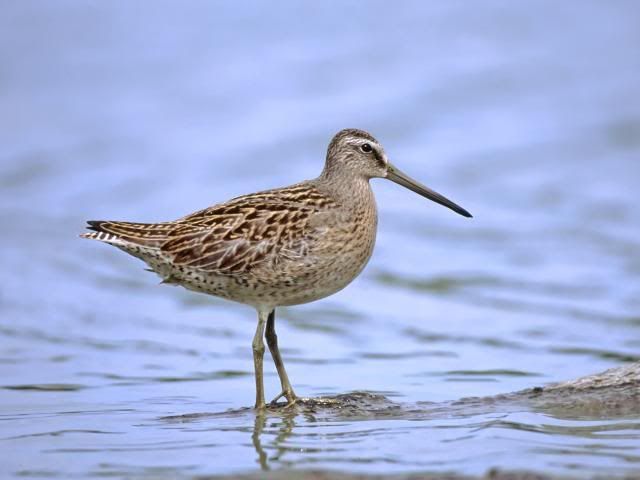
Short-billed Dowitcher
Credit: Jeff Nadler
A few nights ago after putting the car in the garage, I stepped outside to the sounds of ray guns overhead. Those ray gun sounds were the calls of a flock of migrating Short-billed Dowitchers flying north from a Maine coast saltmarsh where they had probably spent the day feeding on small invertebrates and marine worms. They were headed to the Boreal to find a peat bog in which to lay their eggs and raise their young.
How can I say that with so much certainty?
That's because over 95% of the species global population breeds in the Boreal. In fact, the automated nocturnal flight call recording station that I run at my house has recently documented a number of night migrating Boreal breeding shorebirds passing over my house here in Gardiner, Maine about 30 miles from the coast. The list includes Least Sandpiper and Semipalmated Plover (both with more than 50% breeding in Boreal), Greater Yellowlegs, Solitary Sandpiper, and Spotted Sandpiper (all three species have more than 70% of their breeding population in the Boreal).
In the last few days my station has also recorded hundreds of songbird calls including lots of Swainson's Thrushes and an increasing number of Canada Warblers. I also just received some recorded Swainson's Thrush call notes from a new recording station at the Teatown Lake Reservation in the Hudson Valley of New York from last week.
As part of our work to understand the issues impacting these birds long-term survival, we have begun mapping different potential risks to Boreal birds within their Boreal breeding grounds. These risk maps help to clarify the management issues that must be considered and that are of highest potential impact at the broadest landscape scale. Take a look at our maps of overlap between Canadian mining claims and the ranges of two of the bird species that have been migrating over us here in Maine this week, Short-billed Dowitcher and Canada Warbler. Both species have shown significant declines over the last 40 years. Historically, Short-billed Dowitchers were much more abundant. I write in my book about one observer describing a May, 1868 flight on the coast of Maine as being 12 miles wide and 100 miles long! Sadly, the subspecies of Short-billed Dowitcher whose breeding range shows the greatest overlap with mining claims and many other industrial activities is the one that is also thought to be the least numerous (the hendersonii subspecies for you fellow shorebird fanatics). Canada Warbler populations have declined by more than 50% since the 1960's and the species was recently added to Canada's official list of Threatened bird species. Clearly mining is one of a number of issues that does and will impact populations of these and many other species and consequently we should consider those impacts in landscape planning and management.
Short-billed Dowitcher Map

Canada Warbler Map


